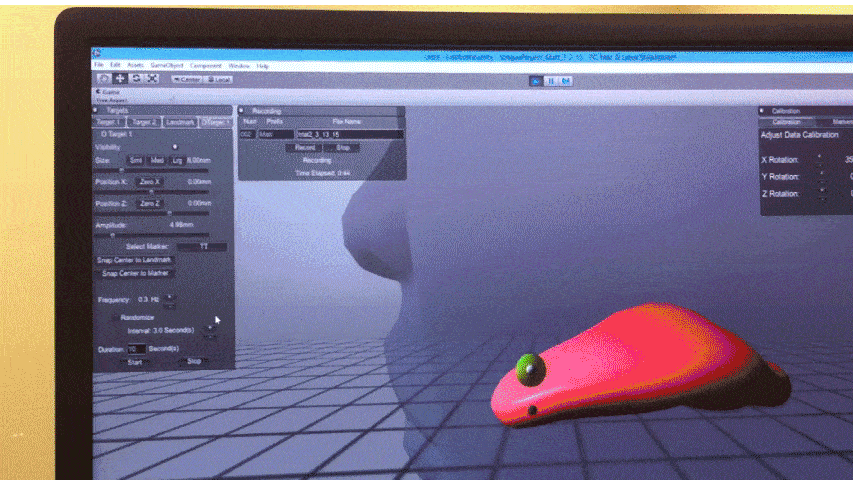
Pursuit tracking of tongue tip sensor
Pursuit visual motor tracking (VMT) tasks can provide information about the integrity of forward and inverse motor control processes by having participants follow predictable signals (at varying speeds) and unpredictable signals (which presumably require increased reliance on feedback).
Using lip and jaw VMT tasks, past studies have examined tracking performance in healthy individuals and those having apraxia of speech (AOS). Results suggest that AOS is a motor programming deficit resulting largely from the disruption of internal models. However, less is known about the specific motor control properties of the tongue, the primary speech articulator. We are therefore using Optispeech to learn more about human tongue behavior, including motor learning and control in healthy individuals and persons with AOS and Parkinson’s disease (PD).
For more information:
Fazel, V., & Katz, W. F. (2016). Visuomotor pursuit tracking accuracy for intraoral tongue movement. The Journal of the Acoustical Society of America, 140(4), 3224-3224.
